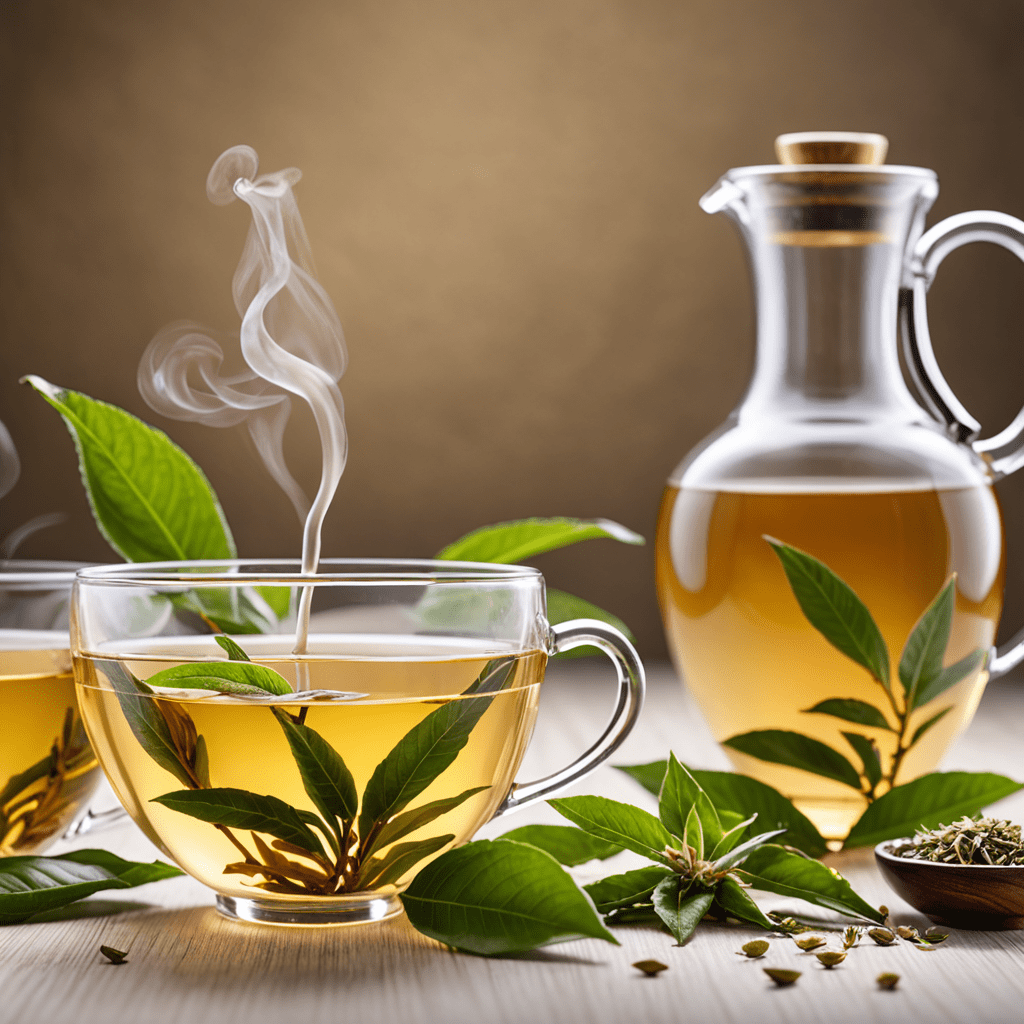All About Thai Green Tea: A Refreshing and Healthy Beverage

If you’re a fan of tea, you’ve likely come across various types, from black and oolong to herbal and white tea. One particular type that has gained popularity in recent years is Thai green tea. With its vibrant color and unique flavors, Thai green tea offers a refreshing and enjoyable drinking experience. But what exactly is Thai green tea, and what sets it apart from other types of tea? In this blog post, we will explore the origins, characteristics, brewing methods, health benefits, and popular recipes of Thai green tea.
Origins and Characteristics of Thai Green Tea
Thai green tea, also known as “Cha Khiao” in Thai, originates from the northern regions of Thailand, where tea cultivation has been a significant part of the local culture for centuries. This type of tea is made from the leaves of the Camellia sinensis plant, the same plant used to produce other types of tea, such as black and oolong. However, what distinguishes Thai green tea is its unique processing method.
After harvesting, the tea leaves undergo a process called withering, in which they are left to dry and wilt, followed by a quick heating or steaming to halt oxidation. This method helps retain the vibrant green color, delicate flavor, and beneficial compounds of the tea leaves. Thai green tea is characterized by its fresh, grassy aroma, mild bitterness, and a slightly sweet aftertaste.
Brewing Thai Green Tea: Tips and Techniques
To enjoy the full flavors and aromas of Thai green tea, it’s crucial to brew it properly. Here are some tips and techniques to help you prepare a perfect cup of Thai green tea:
- Water Temperature: Heat water to around 175°F (80°C), just below boiling point.
Tea-to-Water Ratio: Use approximately 1 teaspoon of loose tea leaves or 1 tea bag per 8 ounces (240 ml) of water.
Steeping Time: Steep the tea leaves for 2-3 minutes to release their flavors gradually. Adjust the steeping time based on your preference for a stronger or milder taste.
Straining: If using loose tea leaves, strain the tea before pouring it into your cup or teapot to remove any sediment.
Serving: Thai green tea can be enjoyed hot or cold. Add sweeteners like sugar or honey to enhance the flavor if desired. It is commonly served with ice and a slice of lime or mint leaves.
Remember, experimenting with brewing methods and adjusting the tea and water ratios will allow you to find your preferred taste and strength.
Health Benefits of Thai Green Tea
Aside from its delightful flavors, Thai green tea also offers numerous health benefits. Thanks to its rich natural compounds and antioxidants, this tea provides potential advantages, such as:
- Antioxidant Boost: Thai green tea contains antioxidants known as catechins, which help reduce oxidative stress and neutralize free radicals in the body.
Weight Management: Some studies suggest that the polyphenols in Thai green tea can aid in weight loss by increasing metabolism and promoting fat oxidation.
Cardiovascular Health: Regular consumption of Thai green tea may contribute to cardiovascular health by improving blood vessel function and reducing the risk of heart disease.
Oral Health: The antimicrobial properties of Thai green tea can help inhibit the growth of harmful bacteria in the mouth, reducing the risk of dental issues like cavities and gum disease.
Digestive Support: Thai green tea has been traditionally used to support digestion and alleviate digestive discomfort due to its natural soothing properties.
It’s essential to note that while Thai green tea offers potential health benefits, it should be consumed in moderation as part of a balanced diet.
Popular Thai Green Tea Recipes
If you’re looking to explore new and exciting ways to enjoy Thai green tea, here are a few delicious recipes to get you started:
1. Thai Green Tea Latte
Ingredients:
– 1 cup of brewed Thai green tea
– 1 cup of milk (dairy or plant-based)
– Sweetener (optional)
Instructions:
1. Brew Thai green tea according to the instructions.
2. Heat the milk in a saucepan or microwave until hot.
3. Froth the milk using a frother or whisk until creamy.
4. Pour the brewed Thai green tea into a mug, add sweetener if desired, and stir.
5. Slowly pour the frothed milk over the tea to create a latte-like effect.
6. Garnish with a sprinkle of Thai green tea leaves or cinnamon powder.
2. Thai Green Tea Smoothie
Ingredients:
– 1 cup of brewed Thai green tea
– 1 ripe banana
– ½ cup of spinach or kale
– ½ cup of frozen mango chunks
– ½ cup of Greek yogurt (optional)
– Ice cubes
Instructions:
1. Brew Thai green tea and let it cool.
2. Add all the ingredients to a blender and blend until smooth.
3. Adjust the consistency by adding more Thai green tea or ice cubes as desired.
4. Pour into a glass, add a straw, and enjoy!
3. Thai Green Tea Sorbet
Ingredients:
– 2 cups of brewed Thai green tea
– ½ cup of granulated sugar
– 1 tablespoon of lime juice
Instructions:
1. Brew Thai green tea and let it cool.
2. In a saucepan, combine the brewed tea and sugar. Heat over medium heat until the sugar dissolves.
3. Remove from heat, stir in lime juice, and let the mixture cool.
4. Pour the mixture into an ice cream maker and churn according to the manufacturer’s instructions.
5. Transfer the sorbet to an airtight container and freeze for a few hours until firm.
6. Serve in scoops or as desired.
Thai Green Tea FAQ
Q1: Can Thai green tea be enjoyed without sweeteners?
Yes, Thai green tea can be enjoyed without any sweeteners. The natural flavors of the tea are often enough to satisfy the palate. However, if you prefer a sweeter taste, you can add sweeteners like sugar or honey to enhance the flavor.
Q2: Is Thai green tea caffeine-free?
No, Thai green tea contains caffeine, although the caffeine content is generally lower compared to black tea. If you’re sensitive to caffeine, it’s advisable to consume Thai green tea in moderation or opt for decaffeinated versions.
Q3: Can Thai green tea be consumed during pregnancy?
While Thai green tea is generally considered safe for consumption during pregnancy, it’s recommended to consult with a healthcare professional before adding it to your diet. Pregnant women may have varying caffeine tolerances, and it’s essential to monitor intake accordingly.
Q4: Where can I purchase Thai green tea?
Thai green tea can be found in specialized tea shops, Asian grocery stores, and online retailers. Make sure to choose reputable sellers to ensure the quality and authenticity of the tea.
Q5: Can Thai green tea help in achieving weight loss?
Thai green tea has been suggested to aid in weight loss due to its potential metabolism-boosting properties. However, it’s important to remember that weight loss is a complex process and cannot solely rely on the consumption of a single beverage. It’s best to maintain a balanced diet and active lifestyle for achieving weight loss goals.
Q6: Can Thai green tea be enjoyed by children?
Thai green tea can be enjoyed by children in moderation, taking into account their caffeine sensitivity. It’s advisable to consult with a healthcare professional or pediatrician before introducing Thai green tea to children.
Discover the world of Thai green tea and embark on a flavorful journey with this unique and rejuvenating beverage. Whether you prefer it hot or iced, experiment with brewing techniques and recipes to find your perfect cup. Cheers to good health and delightful tea drinking experiences!



